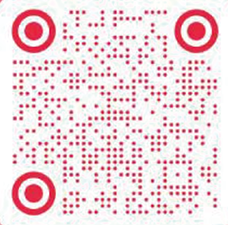Duration: 2011.11.19 -- 2011.12.13
Location: 2nd and 3rd floor exhibition hall of building 1
View Panoramic Exhibition
This exhibition witnesses the whole new works made by Jannis Kounellis, the famous Arte Povera master from Italy. Jannis Kounellis is considered one of the most representative artists of Arte Povera movement. Arte Povera, proposed by Italian art critic Germano Celant in 1967, concludes and describes the artistic styles and ideas of many young Italian artists at that time. They used junks, everyday materials or things people often ignore as the media of their artworks, aiming to cast off and break down the conventional constraints set by “high” art, and redefine art languages and ideas. Creating art with such primitive and simple materials is often considered as a school of conceptual art.
Translating China, curated by Mr. Huang Du, is the result of Mr. Kounellis’ thoughts on China, and is also the artist’s first exhibition in China. His works analyze Chinese society and culture, and manifest the inner connection among the reality, tradition, memory and context. As usual, Kounellis uses coal, steel plates, copper plates, gunnysacks, wood, etc., which reveals the aesthetic of being simple, natural, primitive and humane he always adheres to. It’s particularly worth noting that when he was in China, he used lots of porcelain shards, porcelain bowls, white cloth and Chinese army coats in addition to steel plates, and combined them into different patterns, forms and material relationships. This not only highlights the contrast or opposition existing between materials, e.g. soft and hard, natural and artificial, fluid and solid, traditional and modern, but also presents and constructs a unique sense of beauty of forms and languages, where dramatic features mingled with poetic charm. In Mr. Kounellis’ eye, the relation between modern times and traditions, and the relation between norm and abnormity, are kind of dialectic visual philosophy. As a traveller, he has always been communicating with different cultures, ready to absorb and transform things he originally couldn’t classify.
In contemporary western art, Jannis Kounellis is a great master, and some of his works are important connection points in the art history. As early as in 1967, he had involved live birds in his installation Untitled. Two years later, he even installed 12 horses in a gallery at Rome. At that time people were greatly shocked by his avant-garde art practices, which brought tremendous impact on the concept and border of art, and set a landmark on life art. Jannis Kounellis had drawn inspirations from the dramatic elements in Caravaggio’s paintings, and became a pioneer who uses animals as media in a subversive manner. It is only after him that this kind of art began to assume a new aspect, e.g. Damien Hirst’s cattle or sheep, Maurizio Cattelan’s horses, pigeons or squirrels, etc. Thus, Jannis Kounellis is referred to as one of the most important artists at the time of Joseph Beuys. He has been invited to Kassel Documenta and Venice Biennale more than other artists, and many important museums, foundations and individual collectors have collected his works.
Jannis Kounellis was born in 1936 in Piraeus, Greece. He moved to Rome and began to study Accademia di Belle Arti in 1956. He had taught at Düsseldorf Academy of Fine Arts as professor for eight years. Now he lives and works in Rome.
Today Art Museum, Building 4, Pingod Community, No.32 Baiziwan Road, Chaoyang District,Beijing. Tel: 010-58760600
Opening Hours:10 am - 6 pm: closed every Monday and during Spring Festival(2.13-2.23).
© 2005-2023 Today Art Museum
京ICP备13015009号-1
Tech Support:Today Digital Art Museum











